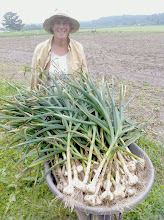
I have been working horses for 29 years ever since I first learned when I came to Wisconsin in 1981. It must be a real relationship because there have been hard times and great times. It is the best when it is at the center of what I do and commit time to. Like many relationships, as the thrill wore off, it has been put aside as other needs pushed in and took the attention. Several times I have considered getting out of the horse business and just using tractors.
One of my mares, Tora is now 23 years old. I bought Tora when she was 5 years old and broke her to work in only a few days. She has always been my smartest and most reliable horse. She can still work, but her feet hurt and she is over weight. I feel lost thinking of working horses without her but it is time to add new animals or stop with the horses altogether. With this in mind, I began to look for new horses. Perhaps, I thought, I should get a different kind of horse. I went and looked at some that the Amish had. Compared with my Fjord horses, they all looked big and awkward. Then I realized that to get horses I really like to work with, I would have to break them myself.
About this time, I learned of a herd of Fjord horses that had belonged to Betty Davidson. Betty had died tragically in a farm accident and all of her horses were for sale. In early December I went and looked at the horses. They were in need of a little attention but one stood out, Molly, an 8 year old mare. In another pasture were the weanling filly colts. All out of the same sire, they looked remarkably similar. I had not come with any intention to get babies but the group was so nice. Two of the fillies broke away from the bunch and approached tentatively. One particularly was very friendly and unfazed. They did not have names but were distinguished by number tags on chains. I fell in love with 13 and 15.
I called Betty's daughter Bev and said that I wanted Molly and the two fillies. I picked them up on December 23 and have not had a single regret. I have christened the two new fillies as Binna (female bear in Norwegian) and Snorri. They are learning about being tied up and having their feet handled. Molly will undergo some training when things warm up in February and I have the time.
It feels like the right time to recommit to working horses. The best days on my farm were when both the horses and I worked in a regular rhythm. I can't imagine my farm without these wonderful teddy bear horses.


